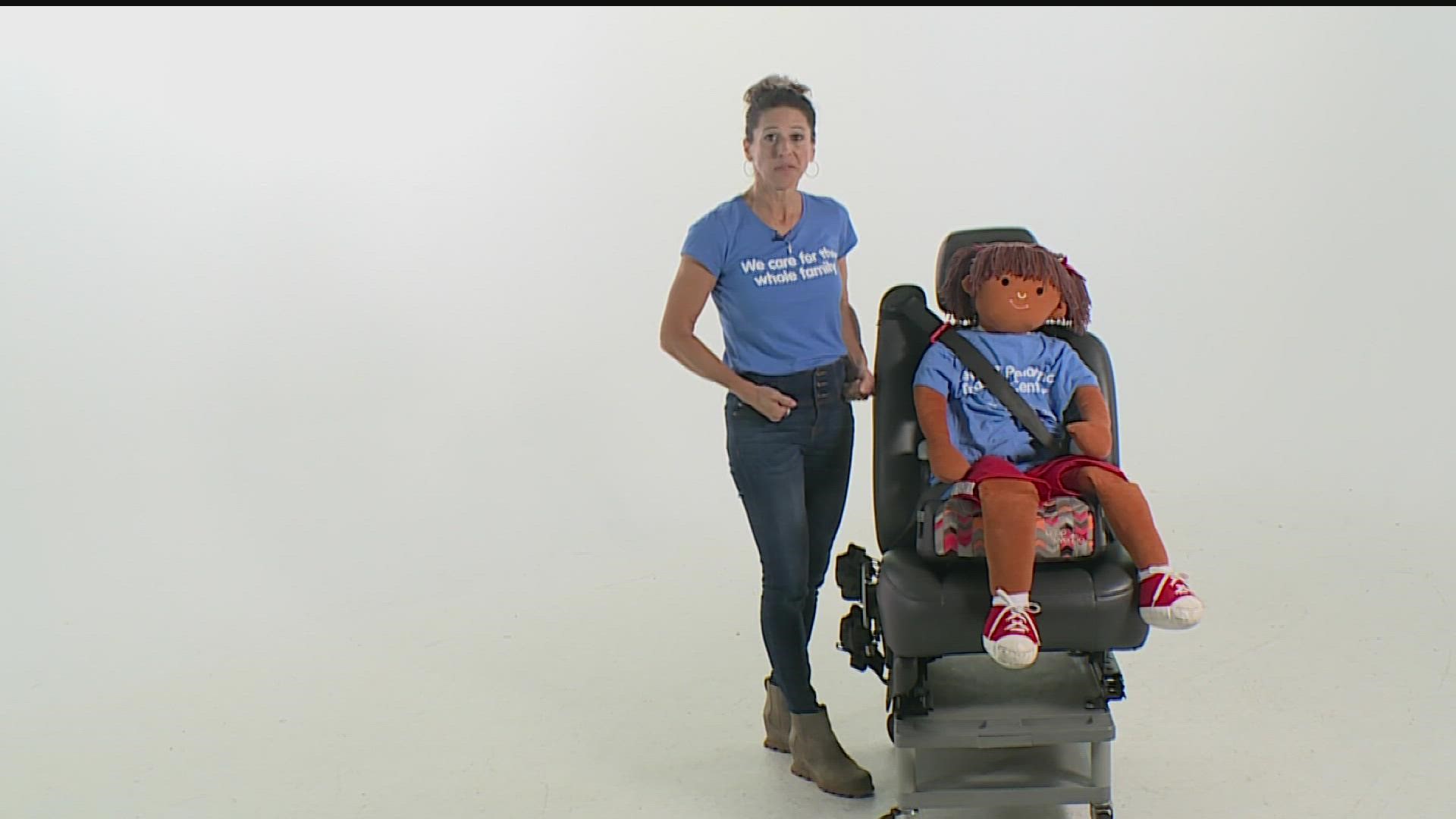MINNEAPOLIS — Shonette Micco knows car seats. As the manager of Regions Hospital's Injury Prevention and Outreach Program, she educates caregivers on the proper use of child safety seats.
Here are some of the top mistakes she sees, and what you should do instead.
1. Not using a car seat or booster seat long enough for your child
If you think 8 years old is too old for a child to use a car seat, think again. Micco makes clear that a child's safety in a vehicle is not based on age, it's based on size.
In order to ditch the booster, Micco says a child's body must be big enough to properly fit the vehicle seat and seat belt without the use of a booster.
For most children, it's when they reach the height of 4' 9", Micco says.
"Most 8-year-olds, while they legally can be out of a booster seat, are nowhere near 4-foot-9," Micco said.
If a child sits in a vehicle seat without a booster before they are big enough, the seat belt hits parts of their body it isn't intended to. Micco points out that in a child who is too short, the seat belt hits the soft part of the child's belly and neck. In a collision, that can cause internal injuries.
2. Not staying rear-facing for as long as possible
Every car seat has a guide on the side or in the owner's manual which shows the weight limit for rear-facing use. Micco says kids should stay rear-facing for as long as that weight limit allows.
"Most crashes are frontal crashes," she explains. "Everyone forward facing is going to have that forward motion [in a crash], putting a lot of pressure on the head and neck. Children who are rear-facing, are caught by the car seat. The car seat cradles them in the crash, so their head, neck, and spine just sink into the car seat."
Micco says don't worry if a child's long legs appear scrunched up while in the rear-facing position.
"There really is no greater risk for lower extremity injury... and if there were an injury to the legs, we can fix those. What we can't fix very well is a head, neck, or spine injury."
3. Use the seat belt to install a forward-facing car seat, instead of the LATCH system
Both are safe, Micco says. But the LATCH system has a weight limit, while the seat belt installation method does not. She says installing it with a seat belt means that caregivers won't have to remember to re-install it when their child reaches the LATCH system weight limit.
"Sometimes, it's easiest to learn how to install it with the seat belt just right from the get-go, Micco said.
Health Partners is hosting a car seat clinic in November. Find more information on how to register here.
Watch more KARE11 Sunrise:
Watch the latest coverage from the KARE11 Sunrise in our YouTube playlist:

